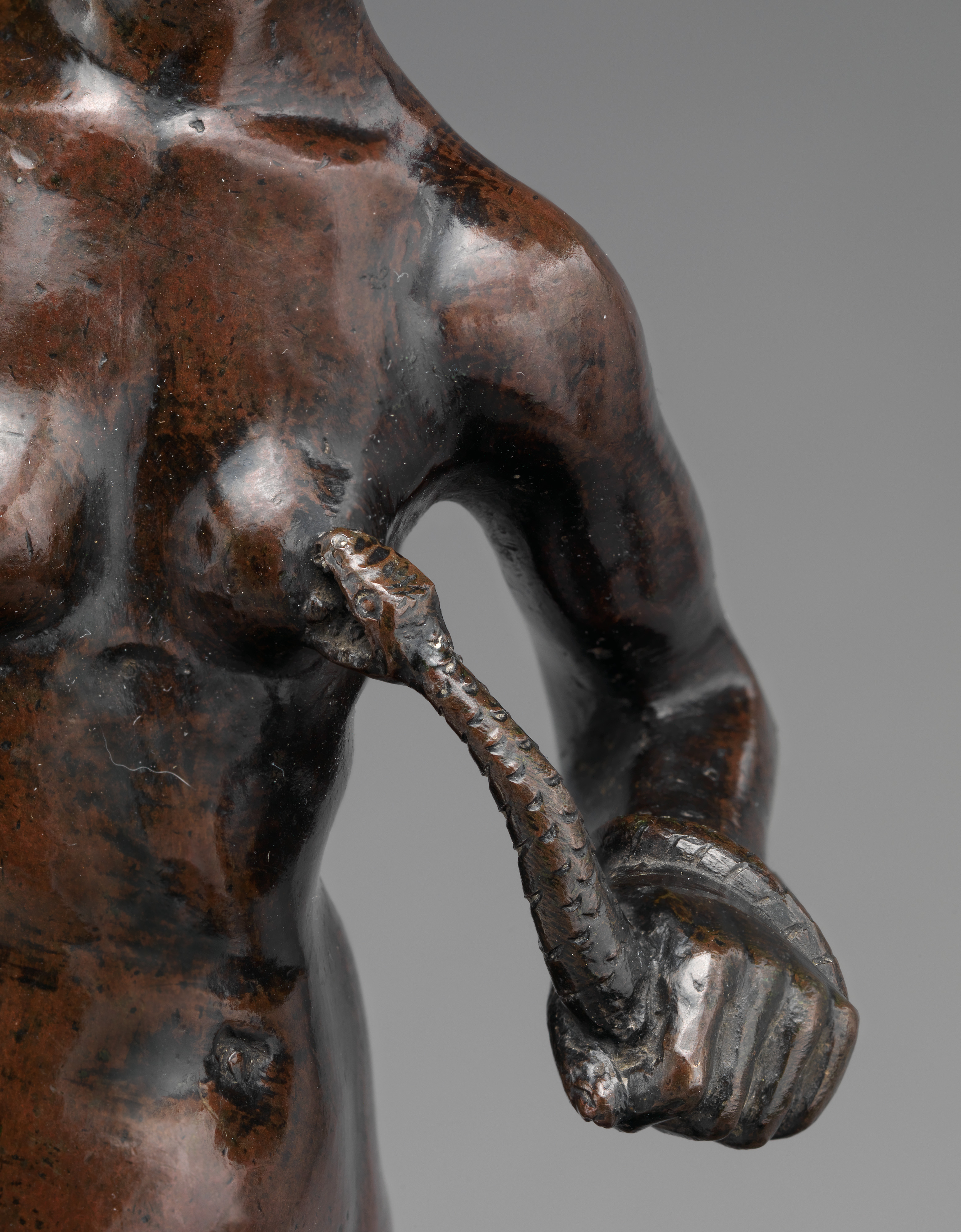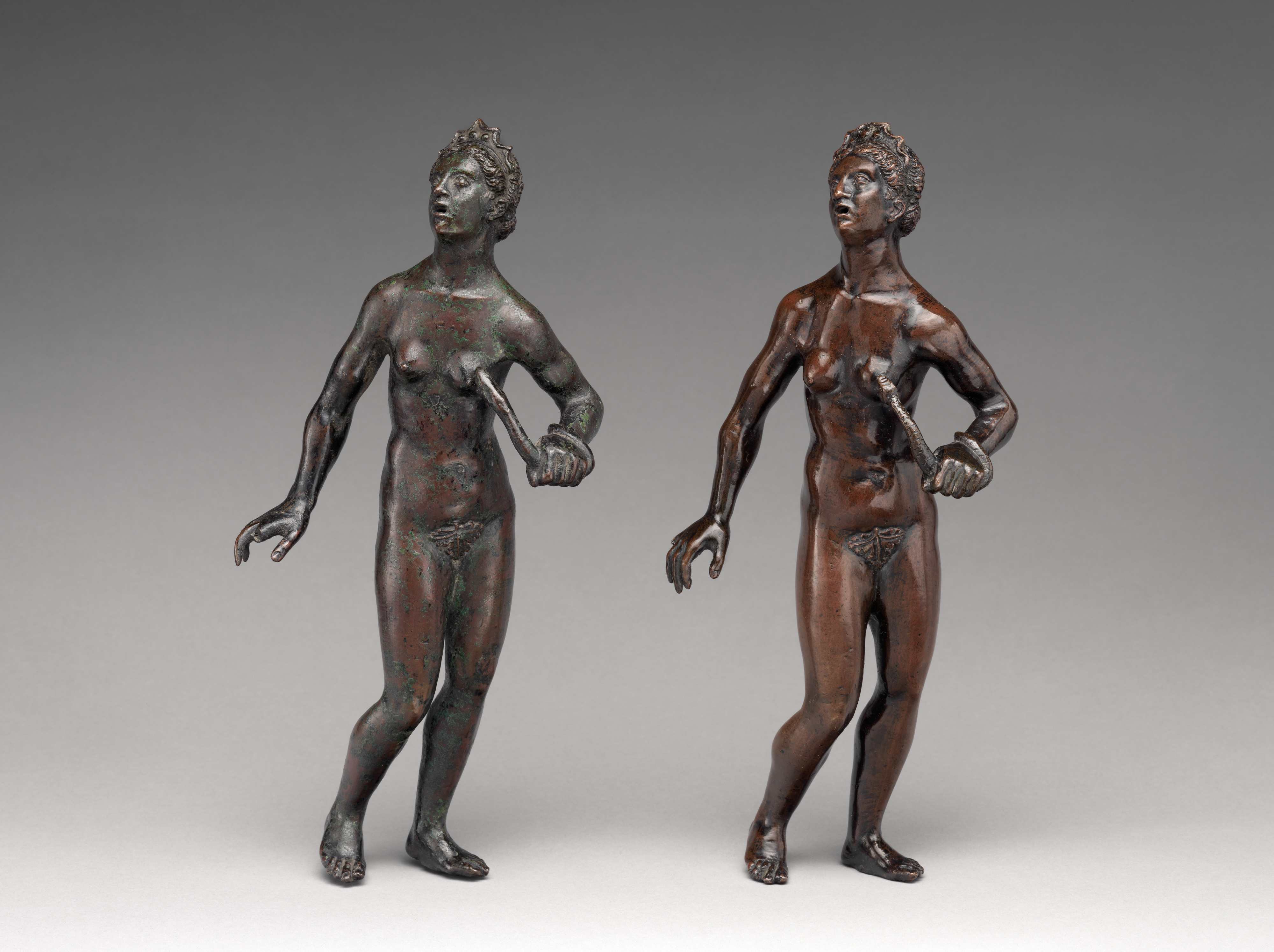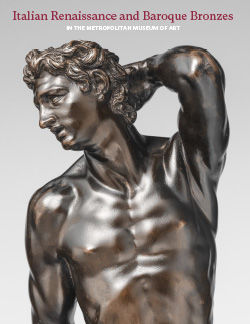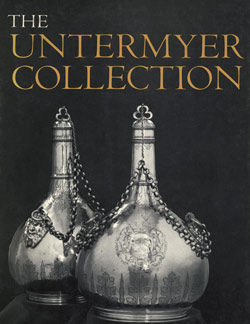Cleopatra
Severo Calzetta da Ravenna Italian
Not on view
The suicide of Cleopatra by pressing a poisonous asp to her breast is one of the great melodramatic moments in Western art. In the nineteenth century, this composition was probably seen as Greco-Roman. Baron Larrey presumably acquired the first bronze as a reminder of his heroic service as a physician in Napoleon Bonaparte’s Egyptian campaign (1798–1801).
Richard Stone’s radiographs show these two statuettes to have been similarly cast, with Severo’s telltale rectangular plugs in the smalls of their backs.[1] The second (B) better preserves his intentions, however, with a more detailed head and scaly skin for the serpent. On the other hand, the diadem of the first (A) is slightly more elegant. The only real differences are in their subsequent treatment: the first was stripped and given a coat of mock verdigris, which survives on much of its surface, while the second was almost entirely stripped of its dark, painted patination, then covered with wax.
Patrick De Winter saw unfathomable resemblances to a Venus in the Walters Art Museum, Baltimore, sometimes ascribed to Antico.[2] He also sensed a strong relationship to Severo’s Queen Tomyris in the Frick, which indeed has similarly sloping shoulders and a knock-kneed stance but is far more vibrant and engagingly theatrical.[3] It is as yet unclear when Severo developed this un-anatomical female physiognomy, which sometimes works but more often fails.
-JDD
Footnotes
(For key to shortened references see bibliography in Allen, Italian Renaissance and Baroque Bronzes in The Metropolitan Museum of Art. NY: The Metropolitan Museum of Art, 2022.)
1. Stone 2006, p. 813.
2. Accepted as Antico in Luciano 2011, pls. 55A–B.
3. Introduced by Pope-Hennessy 1970, pp. 146–50. For it, see especially Stone 2006, p, 811, fig. 1.
Due to rights restrictions, this image cannot be enlarged, viewed at full screen, or downloaded.
This artwork is meant to be viewed from right to left. Scroll left to view more.






